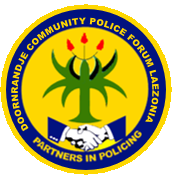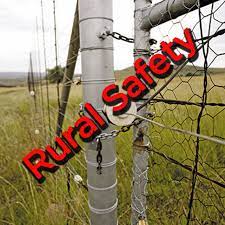Prepare yourself for the worst. If your dog recovers, you can count yourself and your dog lucky. Even if your response time was excellent, there is no guarantee that your dog will survive.
You need to report the poisoning to the police. All police stations in South Africa have been instructed on poisonings, but you may still meet resistance when attempting to open a case. Here are specific charges you may lay:
Contravention of Section 2(1)(n), alternatively Section 2(1)(d) of the Animal Protection Act, Act 71 of 1962, as amended: Administer poisonous substance to animal
AND In the case of Carbamate (Aldicarb – Temik/Sanacarb/two-step)
Contravention of the Fertilisers, Farm Feeds, Agriculture Remedies and Stock Remedies Act, Act 36 of 1947, as amended: Possession of an illegal substance,
AND
Hazardous Substances Act, Act 15 of 1973, as amended: Possession of an illegal substance
In order to make these charges stick, you need to make sure the police get a sample of the poison. Carefully collect any leftover poison from the garden or, if there is nothing there, collect a sample from the vomit (preferably with visible samples of the poisoned substance) and keep it in the fridge until you can hand it over. You can also give a copy of the vet’s bill, which will be quite substantial, to the police. It will help to substantiate the damage caused in monetary terms. This is of course wholly inadequate as a measure of the real damage, but it’s something concrete one can use in court.
2.You need to clean up. This will be one of the most difficult tasks you’ll ever have to undertake. Not only is it a messy job, it is an emotional one!
Here is what you need to do:
1.Protect yourself from the poison: It is just as poisonous to you as it is to your dog. Wear rubber gloves, wear protective clothing, wear decent shoes. Remember: the poison can be ingested, inhaled, and absorbed trough the skin. Do not smoke, eat or drink, rub your eyes, or handle any uncontaminated household articles before changing clothes and thoroughly washing your hands, face and other exposed skin.
2.Restrict access to all contaminated areas, regardless whether it is vomit, saliva, or any other fluid or substance. This means no children, no visitors, and no other pets; only the person who is going to clean up should be allowed in.
3.Collect all remaining poison from the place where the dog was poisoned. Seal it in decent plastic containers. Sprinkle Slaked Lime over the area and water down the entire area extremely well. Also water down any run-off very well. You want to remove all remnants of the poison from the surface.
4.Collect all the solid waste as well as severely soiled articles and seal all in plastic containers.
5.Wash everything that was in contact with the poison, including any excretions from your dog. A 10% solution of Sodium Carbonate is recommended. Brush the solution well into the entire area and leave for at least 8 hours. Wash off and absorb the water into an absorbent material. Wood-based cat litter pellets work really well — a little absorbs a lot of water and it’s easy to collect afterwards. Do not dispose of in the drain; dispose of as described below. Wash again with a strong household detergent and dry with an absorbent material. Do not dispose of washing water in the drain or garden! Remember to wash window sills, walls, doors and door frames, legs of furniture, etc.
6.All washable rugs, table cloths, cushions, etc. should be washed thoroughly by machine – remember to remove and collect all solid waste before washing. Use a strong oxidising detergent such as “Vanish”.
Dispose of the waste:
1.If you are in a municipal area, your municipality should be able to handle toxic waste. Contact them in connection with the collected waste. Alternatively contact a reputable toxic waste disposal company for assistance.
2.If you are in a rural area:
1.Do Not dispose of anything into the septic tank since you’ll poison everything downstream of the French drain.
2.Aldicarb/Temik: burry the contaminated material at least 45cm deep (make sure no animal will be able to dig the stuff up again), in excess of 50m away from wells, French drains, trenches and water runs. Mix an equal mass of Soda Ash (Sodium Carbonate) or Slaked Lime (Calcium Hydroxide) into the material. Soak well with water. Backfill.
3.Organophosphates: Burn all collected materials and absorbent material used in washing in a place where no ground or water contamination by smoke or ash can take place. Collect the ash, mix with equal mass Soda Ash, and bury as above. Only burn if you are sure that no Aldicarb/Temic was used, otherwise burry everything as above.
4.Rat Poison: it is difficult to recommend a disposal method without knowing what is in it.
3.If in any doubt, contact your nearest Poison Information Centre.
4.If at any time during the cleanup process, you or a family member feels ill, don’t hesitate: go see a medical professional. There is a real possibility that you may have been exposed to too much of the poison and may be experiencing symptoms of poisoning yourself.
Resources
It is really difficult to find decent, and specifically complete, information on poisoning for the layperson. Here are a few sources I found useful. If you know of a source that provides decent information, please let me know.
Huskyrescue.co.za First Aid: http://www.huskyrescue.co.za/need_to_know/first_aid.php
INCHEM Chemical Safety Information from Intergovernmental Organizations: http://www.inchem.org
INCHEM Organophosphates: http://www.inchem.org/documents/pims/chemical/pimg001.htm#PartTitle:12.%20ADDITIONAL%20INFORMATION
Organophosphate and carbamate toxicities: http://www.edoc.co.za/modules.php?name=News&file=article&sid=964
Toxipedia: http://www.toxipedia.org
Wikipedia: http://www.wikipedia.org
Workingdogs.com has an excellent article on poisonings. A vast variety of poisons, including household items, and treatments is discussed. Go to http://www.workingdogs.com/doc0175.htm. If you don’t get to the page directly, search for it using the search term “Poisoned!” under the “Articles” heading; it’s worth the effort.
Disclaimer
I am not a veterinarian, medical professional, or an expert on poisons. The information presented herein was gathered from product information documentation, information on the internet I deem trustworthy (most of the references are reflected above), and interviews with a few knowledgeable individuals whom have been trough the ordeal themselves. I have taken every care to ensure the accuracy of the information presented herein.
Source: Johann Hamman, https://northernnatalnews.co.za/40205/poisoned-what-to-do-when-your-dog-is-poisoned-by-criminals/
Views: 46

